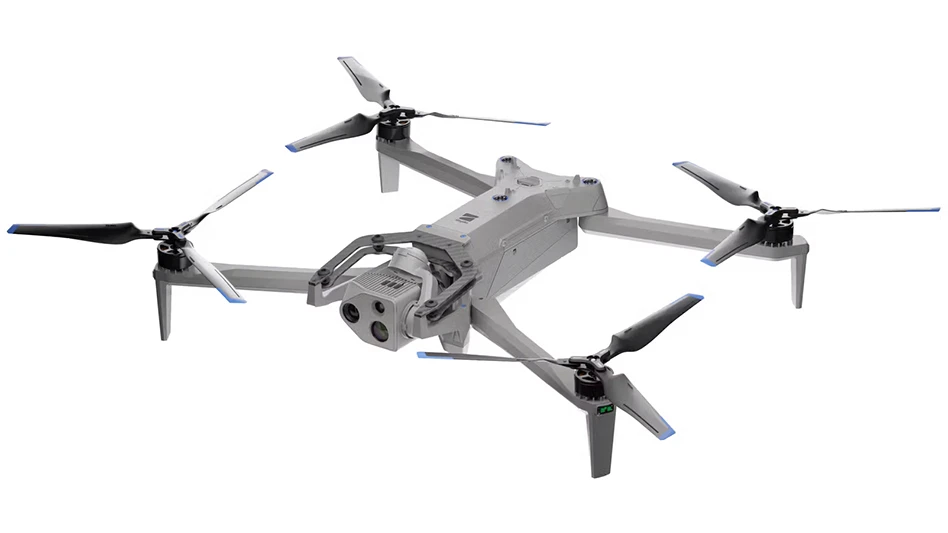
After scaling back operations due to reduced demand and shrinking stock levels that caused the United States defense sector to lose more than 40% of its value, these same manufacturers are now struggling to match renewed demand and hit the production accelerator pedal at full speed.
Many of the challenges defense manufacturers are facing are external, but some are internal. Manufacturers are being held back by disparate internal manufacturing systems they’ve never addressed and inconsistent information sources hindering their ability to streamline operations and fast forward production. Rob Mather, vice president, Aerospace and Defense Industries, IFS, identifies the four operational trigger points where digital technologies are addressing defense manufacturing issues, and boosting production without driving up costs and risk.
A recent Deloitte report pulled no punches when it argued that to unlock growth and efficiency in today’s growing defense market environments, aerospace and defense (A&D) organizations had to take digital transformation seriously. “Modernizing and integrating processes and enabling technologies are some significant steps for the A&D industry to improve production throughput and cost efficiency. Embracing digital transformation can reshape A&D production processes at all stages, significantly reducing industrialization cycle times, improving efficiencies, increasing production yield, and elevating quality standards.”
This means a company-wide approach to software and information connecting the shop floor to the top floor, so they all operate efficiently to increase production, precision, and agility. This must start by moving away from siloed and inconsistent information sources to a single integrated management system gathering data from the manufacturing execution system (MES) and enterprise asset management (EAM) system to inform the customer relationship management (CRM) and enterprise resource planning (ERP) system – providing a single source of truth.
Here are the four key operational trigger points where technology will enable defense organizations to achieve the high-performance manufacturing operations needed to take advantage of the boom years ahead.
1. AI enabled problem detection augments and de-risks lean operations
To help deal with surges in demand, defense manufacturers have reversed inventory strategies from lean and just-in-time principles to over-stocking parts to ensure an inventory buffer. Despite reducing production risks, financial risks have been increased due to cost of purchase, storage, and tracking of materials and parts. To better balance risk, defense manufacturers can look to integrate operations and take advantage of demand-driven material requirements planning (DDMRP). This will ensure inventory levels match demand levels and supply chain variability. By looking at actual usage data, DDMRP can determine if the stock level for a part is sufficient to cover demand, making defense manufacturers more sensitive to supply chain disruptions, variations in demand, and production downtime.
Using artificial intelligence (AI) within defense forces and manufacturers is on the rise, with the U.S. Department of Defense (DOD) budgeting $1.8 billion for AI applications and stating they will be used to help defense forces and organizations recognize patterns, learn from experience, make predictions, and generate recommendations.
AI can help further de-risk production and financial issues. Manufacturers should look to combine anomaly detection and pattern recognition with real-time data correlation. The combination of AI anomaly detection and DDMRP can radically increase the speed and accuracy of problem detection throughout all aspects of the organization, and action potential chokepoints before they escalate into complex and costly problems.
2. Drive efficiency by integrating management platforms to unify planning and production
Defense manufacturing projects by their very nature are complex, with multiple production lines working to intricate assembly requirements. Project management, already a major challenge for defense manufacturers, is further exacerbated by current ERP management software causing a disconnect throughout operations, alongside a lack of a skilled workforce readily available to defense manufacturers. Recent reports from Guidant Global highlight the workforce issues facing the UK defense sector, with key decision makers stating they’re already facing a lack of skilled manufacturers and mechanics.
Implementing integrated project management software will allow defense manufacturers to align their planning through their operations to optimize their production and increase efficiency. Using Internet of Things (IoT) technologies such as integrated project management software allows for data to flow in real time so people, systems, and capabilities can be leveraged in every aspect of their operations.The increased visibility brought by integrated project management software can allow for manufacturing teams to react quickly to new priorities, ensuring workers and machinery are coordinated to maximize efficiency and capacity, and avoid time, money, and resources being wasted.

3. Increased organization-wide visibility with business intelligence to automate workflow triggers
One of the biggest challenges defense manufacturers are struggling to overcome due to rising demand levels is reducing lead times – in August 2023 the delivery time for production materials reached 87 days. Despite being reduced by 13 days compared to 2022, the average lead time has yet to recover to pre-pandemic levels. Integrated workflows can help defense manufacturers reduce this by providing all relevant parties with data, so people, machines, and assets’ time and skills are optimized.
A key part of digital transformation within the defense manufacturing industry is to move away from siloed data to real-time data flowing from the shop floor to the top floor of defense manufacturers. Powerful MES with integrated workflow engines will allow for data to flow from end to end, so every worker has operational visibility of what’s happening and what needs prioritizing.
Using powerful MES with integrated workflow engines brings far more benefits to defense manufacturers compared to typical ERP systems with data aggregators or business intelligence reports. Integrated workflow systems are accessible for all relevant parties – providing vital insights into ongoing work everywhere.
4. A single source of truth keeps defense manufacturers on the right side of regulations
Defense manufacturers operate in an industry defined by regulatory requirements. Whether it’s supply chain, cybersecurity, sustainability, or employment, they must comply with their own regulation. This requires defense manufacturers to have fully traceable operations and processes which generate information that is readily available for regulatory reporting.
As regulations get stricter, current disjointed systems make it hard for defense manufacturers to meet requirements, with slow data compilation and increased risk of information being inaccurate or out of date. A real-time, single source of truth is needed.
This means manufacturing management platforms should include integrated and automated templates for mandatory government reports that are ready to use when called upon. Combining MES and ERP in one place will also help them comply with the ISA-95 standard from the International Society of Automation (ISA). This ensures they are using these standardized data models and communications to enable consistent and accurate data exchanges throughout all business systems.
Putting the digital building blocks in place to achieve high- performance manufacturing
Within the defense manufacturing industry, some organizations may choose to partner with strategic technology partners to help them achieve their financial and production targets. These partners can better understand the challenges defense manufacturers are facing, and the integrated management platform they need to meet challenges, optimize operations, and increase customer trust and satisfaction.
This means focusing on moving away from siloed and disparate data to an integrated system and single source of truth with data from operational systems such as MES and EAM systems being passed straight to the CRM and ERP system. An integrated management platform can help defense manufacturers deliver on increasing demands – but make the most of their existing workforce and stay compliant.
Getting this digital transformation right is critical for defense manufacturers to grasp control of internal challenges they’re facing, and unlock the high-performance manufacturing needed to make the most of the recent rise in demand.

Explore the October 2024 Issue
Check out more from this issue and find your next story to read.
Latest from Defense and Munitions
- Visual Components celebrates 25 years of simulation and programming software innovation
- Join us for insights on one of the hottest topics in manufacturing!
- Hive Systems Defense Solutions achieves C3PAO authorization
- Shield AI, L3Harris team for breakthrough in autonomy
- You can still register for March’s Manufacturing Lunch + Learn!
- Leonardo DRS receives $45 million U.S. Navy commitment to bolster US submarine industrial base
- Teledyne FLIR Defense wins $15 million contract for Black Hornet 4 Nano-Drones
- Walter HELITRONIC MINI PLUS tool grinding machine + Studer favoritCNC grinding machine





